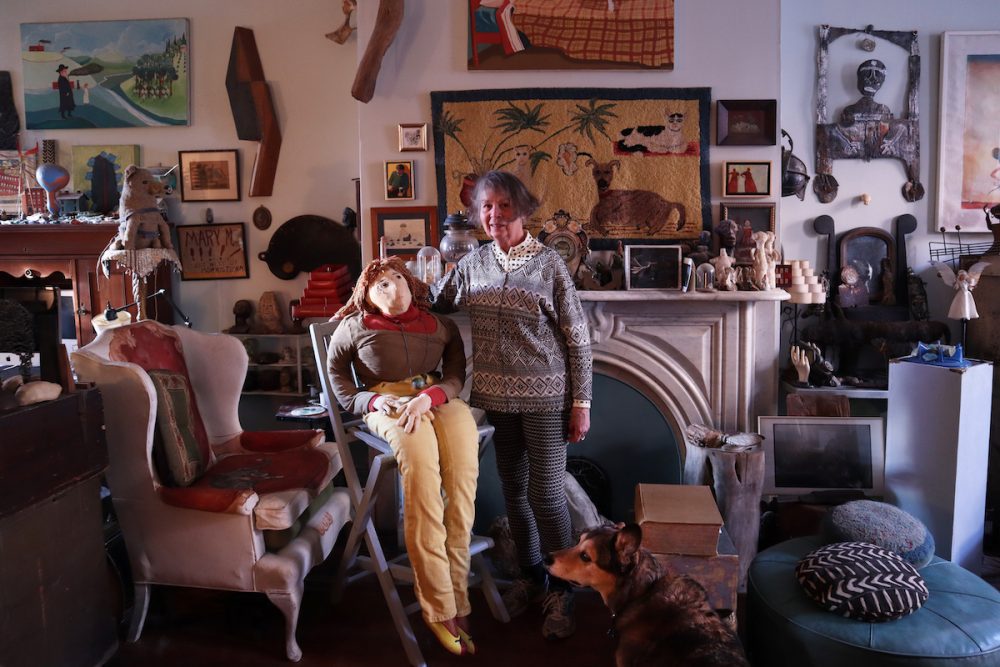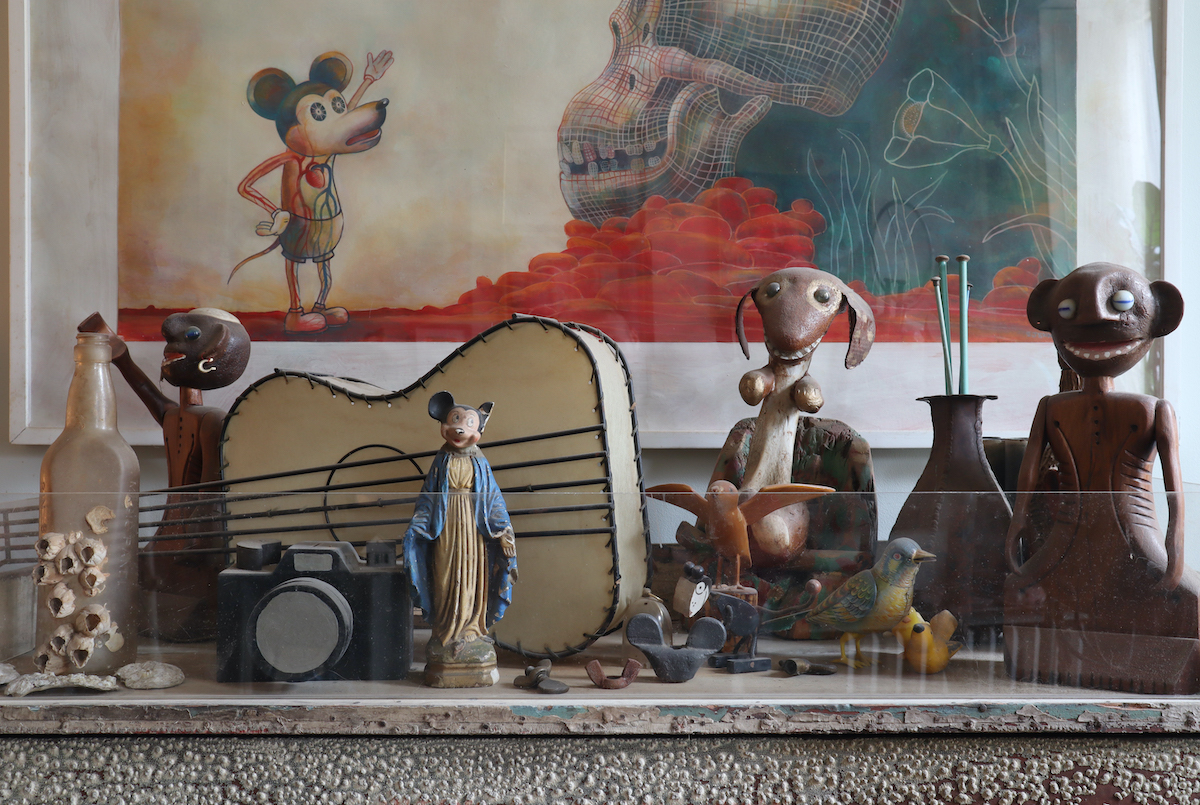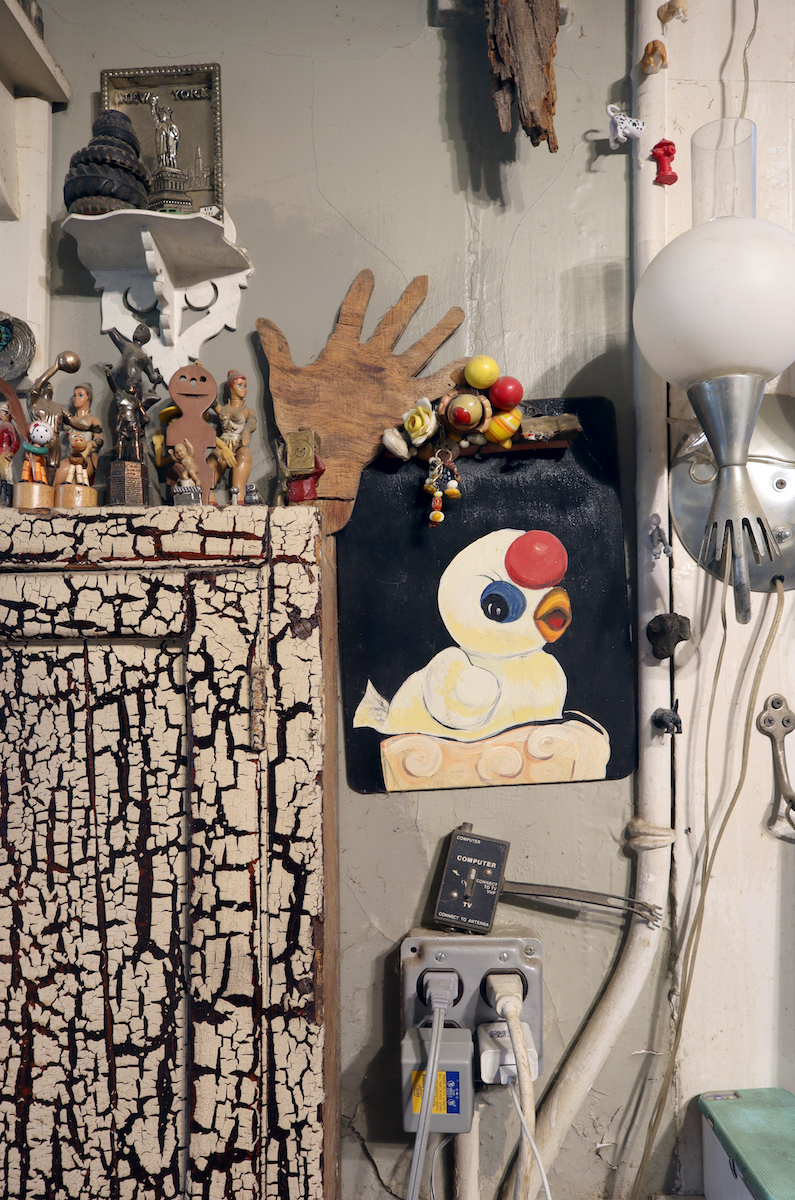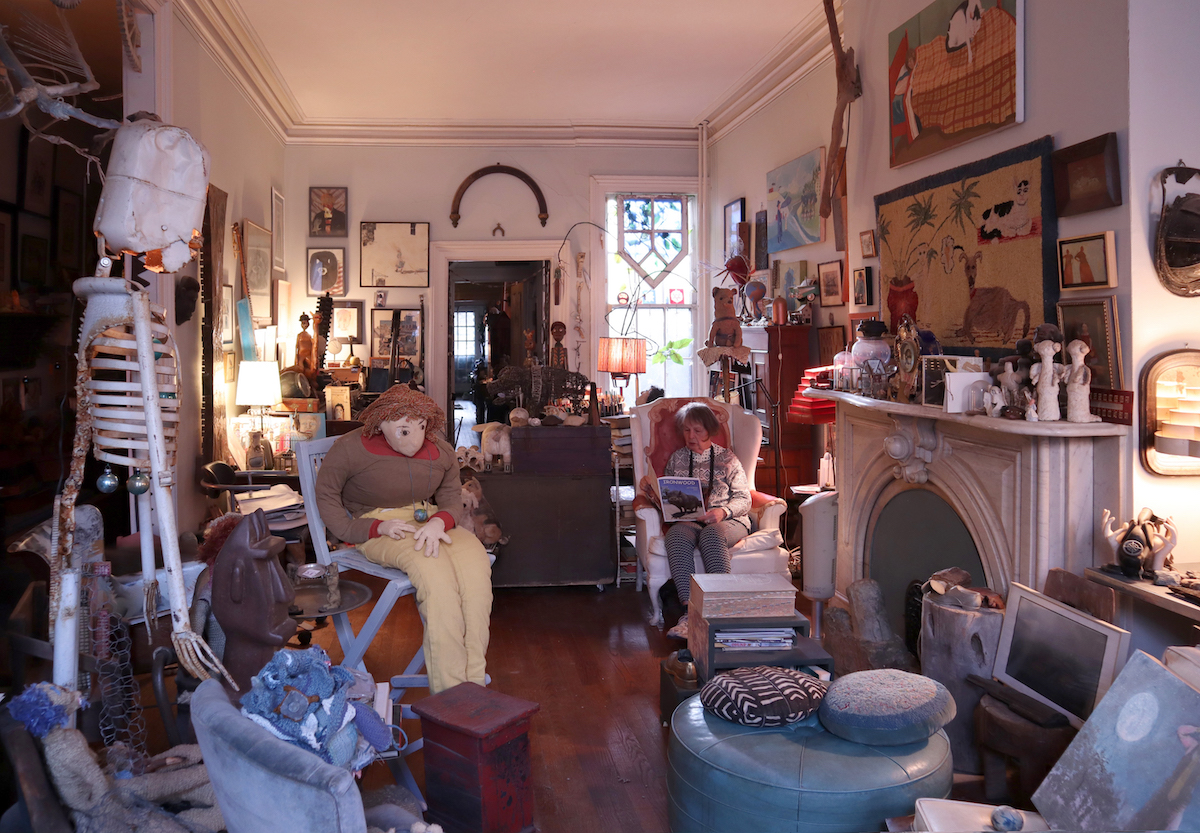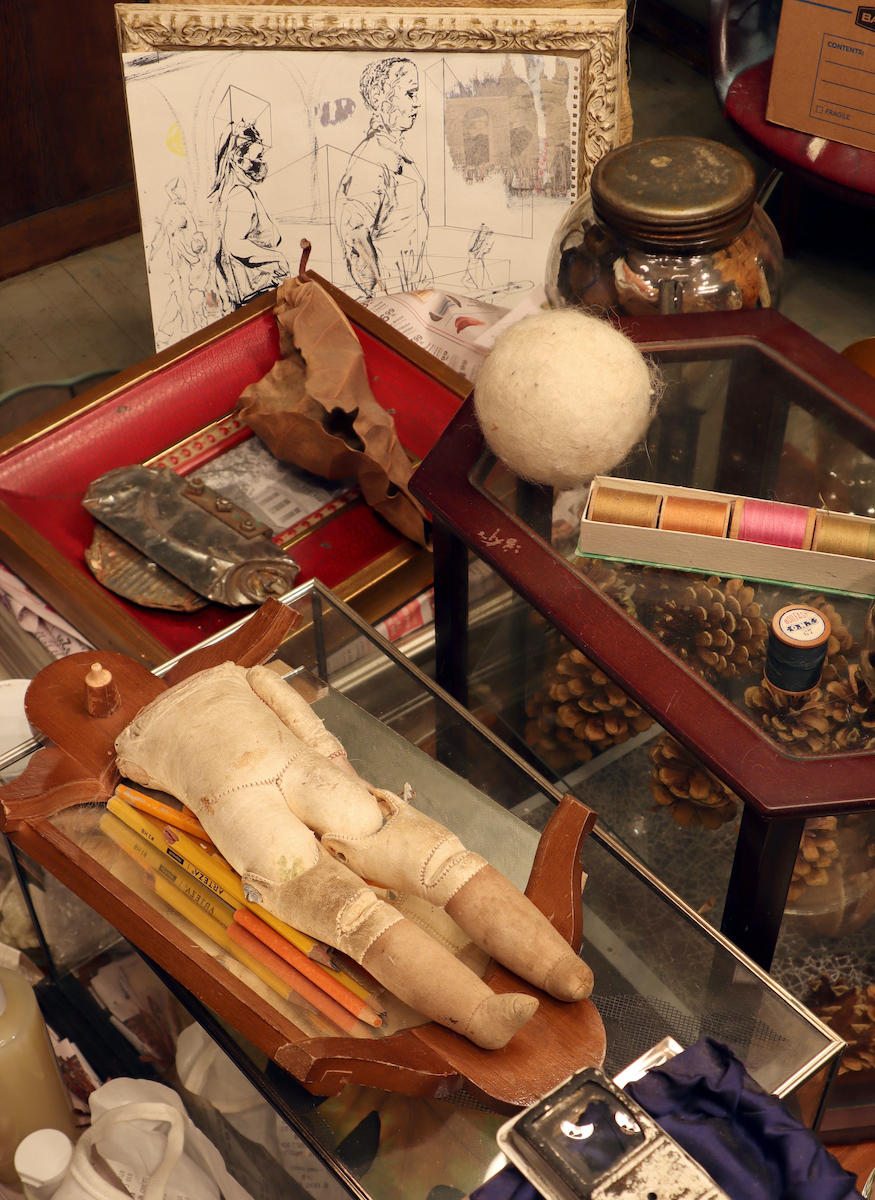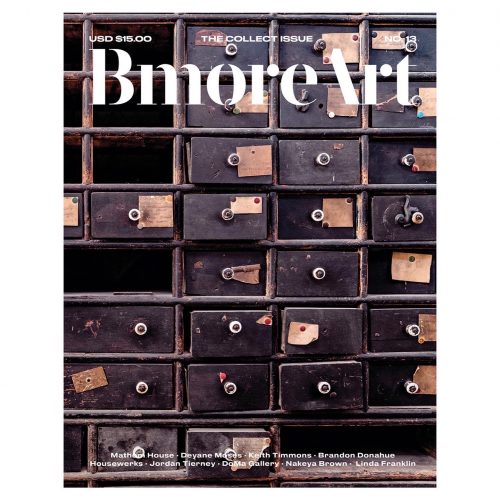I mistook a handbag as a sculpture during my first visit to Linda Campbell Franklin’s home in Bolton Hill. Though the first floor of her home is filled with art, there are no defined boundaries that separate the art in her collection, the art she herself makes, her collections in progress, and the more ordinary articles of her life. There are a pair of framed artworks in the hall that succinctly exemplify this curious fusion: an illustration hung next to a painting, both depicting conjoined dog twins with two heads and no tail. Franklin’s home destabilizes the concept of “right side up” and asks the visitor to take a more unconventional approach to orientation.
Franklin is an artist who works in a variety of forms: painting, drawing, textiles, sculpture, writing, and— most notably—assemblage. She has lived and worked in her house for thirty years. At first glance, her surroundings might look like random clutter. Closer inspection reveals an intricate order. Collecting, cataloging, and categorizing seems to be in her blood. Both of her parents were librarians, and her brother publishes reference books. Franklin began collecting stones when she was four years old. Now collecting fallen leaves around the neighborhood, she recently celebrated her 81st birthday.


